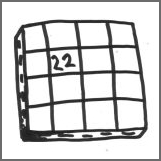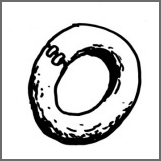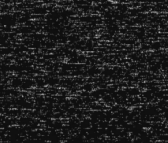Symmetries and Triggers.
V&G (2015-2018) was an artzine and an
A.R.generated virtual artspace.
Every drawing in this zine triggered a
different A.R. space.
For a drawing to function as a trigger image
it needed to be distinguishable from other
images. At the same time I wanted to present
them as being part of the same project so
they could not be too different.
This principle seemed to me to connect to
something that is fundamental to all the
drawings on this site.
A good trigger-image is an image with enough
unique distinguishable qualities that
prevent it from being confused with similar
images.
A drawing with a minimum of
distinguishabilities is a drawing with a lot
of symmetries.
A drawing with a lot of symmetries will not
connect to the server of the app because the
image is too homogeneous. It would cause it
to address multiple locations
simultaneously.
The more symmetries in a drawing, and the
more uniform repetition in a pattern, the
worse it will function as a trigger.
Take for example the square;
All the angles of the square are identical,
as are its sides. Its orientation (left,
right, above, below) and scale cannot be
deduced from its shape. And also when it is
cut in half its symmetry remains.

Within the context of a trigger, every line
of a drawing has clear, distinguishable and
unique qualities.
And within this context, a good drawing is a
drawing that maximizes its distance to
symmetry and repetition in order to make the
connection between the external memory on
the server of the app as clear and strong as
possible.

(some of the V&G trigger images)
With symmetry as a geometrical point-zero,
the drawing process now has a clear
direction and a general goal, that is;
maximizing its distance to that origin. (1)
This move-away from symmetry is not an
infinite process, because from the moment
ink-lines can but overlap, the number of
indistinguishabilities will also increase.
Therefore, an ideal trigger is a drawing
that has optimized that distance.
The variation threshold
One might conclude that for an abstract
drawing to function as a trigger, it needs a
maximum of line-variations.
However, if this means that such a drawing
would always have, of every type of line, in
any given situation, one, unique example,
then the final outcome will not be one of
optimum diversity.
Because if, for example, in every forest,
there would be of every tree one single
unique species, then every forest would be
like any other forest that also has one
unique species of every tree. A global
symmetry has emerged because a program was
executed too rigidly.
Therefore, a certain level of accidental
symmetry is a necessary condition for
structural diversity.
In other words; a flawless, perfectly
executed program, or a program without
replication errors, is a kind of procedural
symmetry and therefore not suited to produce
a good trigger image.
It follows that an ideal procedure, is a
procedure that executes a program -always,
sometimes, here or there, more or less
perfect. As a consequence, the outcome of
the drawing process, even though it has a
clear direction and a goal, has become
unpredictable.
(V&G exhibition at Motel Spatie 2018)
Art, shape and memory
In the Vector & Golf artspace, the relation
between the drawing and part of its content
is arbitrary because the augmented files are
not stored within the shape of the trigger
itself. (2)
However, an effective trigger is a crucial
link between the reader and the augmented
data on the server of the app.
The triggers of the Vector & Golf artspace
are works of art.
This defines a work of art as; the structure
that enables a connection with an external
memory.
Such a coupled, external memory is a
creative memory. (3)
The material form of the drawing (ink on
paper) is permanent, but the virtual,
augmented content is not and can be altered
at any given time.
This situation is not unlike the active
visual experience of a work art like a
drawing, where the material form of the
drawing is permanent but the perception of
that form depends on personal experience,
predispositions, time etc.
in other words; the augmented artspace is a
portal to the content of the work of art and
at the same time it is a metaphor for the
experience of art.
Link to video V&G zine #1
Link to video V&G zine #2
Link to video V&G zine #3
V&G zine #4
Notes
(1) Leyton, Michael. The Structure of Paintings, Springer-Verlag/Wien (2006)
(2)Shape itself is a kind of memory store. The shape of a dent holds information about the causal history of that shape. In other words; a dent is the imprint of the force responsible for its shape. See also; Leyton, Michael. The Structure of Paintings, Springer-Verlag/Wien (2006) According to prof. Leyton artworks are ‘optimized shape’ i.e. maximal memory stores and symmetry is the absence of memory(). In case of the Vector & Golf art space one might add that besides being a maximal memory store, the work of art is a crucial tool in a kind of procedural memory.
(3) According to Kevin O’Regan part of the human memory is also external memory. O'Regan, J. Kevin. The world as an outside memory. Canadian Journal of Psychology Vol 46(3), Sep 1992, 461-488.

7.the WordPad
Glitch as a
metaphor for
abstract
expressionism

12.The ABC of
creative
self-oscillation
for the
autonomous artist
13.Jack Jack & de
Wandelende Feedback
zines, sounds,
projects, contact

marc van elburg 016